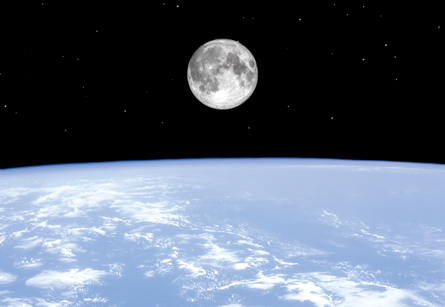Module 5—Circular Motion
Lesson 4—Planetary and Satellite Motion
 Get Focused
Get Focused

© William Attard McCarthy/shutterstock
In Lesson 3 you learned that the motion of all planets in the solar system could be described by Kepler’s three laws. What you did not cover was the explanation for the motion. The Moon, for example, orbits Earth along an elliptical path. Therefore, it would appear to approach and then recede as it orbits Earth. This is confirmed in the next Watch and Listen section, which shows a series of images taken as the Moon orbits Earth over a period of a month. As you can see, the motion is very periodic. Why does this happen? What forces are involved?
periodic: recurring at regular intervals
 Module 5: Lesson 4 Assignments
Module 5: Lesson 4 Assignments
Your teacher-marked Module 5: Lesson 4 Assignment requires you to submit a response to the following:
- LAB—LAB 1, LAB 2, LAB 3, LAB 4, LAB 5, and LAB 6
- Discuss
You must decide what to do with the questions that are not marked by the teacher.
Remember that these questions provide you with the practice and feedback that you need to successfully complete this course. You should respond to all the questions and place those answers in your course folder.
 Watch and Listen
Watch and Listen
Courtesy of NASA
How did Sir Isaac Newton come to explain the motion of planets and other celestial bodies? As discussed in Module 2: Lesson 2, Newton’s universal law of gravitation is involved in this explanation. The term universal means that the motions of the Moon, the planets, and artificial satellites (such as the space station) are all based on similar principles. At the same time, the orbit of any satellite or moon exhibits circular motion; therefore, principles of circular motion will have to be considered as well.
As you work through this lesson, keep this question in mind:
- How are planetary and satellite motion explained using universal gravitation and the principles of circular motion?